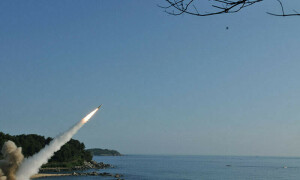CANBERRA: Asia’s arms race may be overstated, with defence spending on the decline as a proportion of economic growth, pointing to an increasing sense of regional security, an Australian defence conference heard on Thursday.
Conventional wisdom that a military build-up and modernisation around the Indian and Pacific Oceans reflected increasing security tensions may be misplaced, Australian Strategic Policy Institute analyst Andrew Davies said.
“The one and glaring exception is China,” Davies said after a speech to the conference, saying the priority of military spending was declining as regional economies boomed.
“I think it does tell us something about their thinking and about their level of anxiety being low,” he said.
While China’s military spend had lifted over the decade from 0.9 per cent of GDP to officially more than 1.5 per cent, and may be unofficially as high as 5.45 per cent, rival Japan had seen spending slip from 1.0 per cent to 0.9 per cent, the institute said.
“When you look at what the other north Asian nations are doing, especially Japan, there is no evidence they are reacting to China,” Davies said.
“Even India, which has stated aspirations to be a major power, they haven’t increased their proportion of spending in GDP terms, although military spending has come up as the economy has come up. In South East Asia the trend is to spend less,” he said.
While there was little evidence of an Asia-wide arms race, the region was modernising its weapons stocks, Davies said, most obviously in China and Southeast Asia.
“Following Singapore’s force modernisation efforts, Malaysia has also acquired modern combat aircraft, and is in the process of acquiring conventional submarines,” Davies said.
Along with China, Australia was one of few countries to dramatically boost defence spending, outlaying more than $20 billion to lift the military’s proportion of GDP from 1.8 per cent to 2.0 per cent, the conference heard.
Australia has committed to a $57 billion modernisation, buying new destroyers, amphibious carriers, stealth fighter aircraft, missiles, tanks, transport aircraft and attack helicopters, as well as a larger army.—Reuters









































Dear visitor, the comments section is undergoing an overhaul and will return soon.